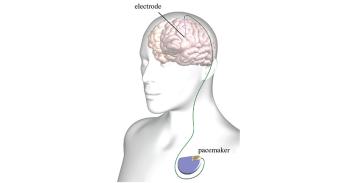
Cambridge researchers are pioneering a new test for autism in the womb, by measuring the levels of testosterone produced by the foetus, which makes its way into the amniotic fluid. They hope to test if children who later develop autism have unusually high levels of testosterone between 12 and 20 weeks of pregnancy.
Cambridge researchers are pioneering a new test for autism in the womb, by measuring the levels of testosterone produced by the foetus, which makes its way into the amniotic fluid. They hope to test if children who later develop autism have unusually high levels of testosterone between 12 and 20 weeks of pregnancy.
...it might help explain why autism is far more common among males.
The new research is based on a study that the Autism Research Centre lab has been engaged in for the last 10 years. That was when the lab started collecting the samples of amniotic fluid that are taken routinely in about six per cent of pregnancies. Usually these samples are analysed for chromosomal abnormalities that might predict the unborn child to be at risk for conditions such as Down Syndrome. After the cytogenetics lab has tested for such chromosomal abnormalities, the fluid is stored for up to a year before being disposed of. Researchers have taken the novel step of asking the biochemists at Addenbrooke’s Hospital to test these samples for the amount of the ‘male hormone’, testosterone.
Of course, testosterone is not just a male hormone, as both sexes produce it. Male foetuses produce twice as much as females, and it is of interest because animal research suggests it is foetal testosterone (FT) that has an organising effect on brain development. It is well recognised that the average male brain differs from the average female brain, not just in overall size (males having the bigger brain) but in the size of specific structures in the brain. In the average female brain, structures like the corpus callosum (the connective tissue between the two hemispheres) is thicker, whilst in the average male brain, structures like the amgydala (the almond-shaped brain region deep beneath the cortex, sometimes thought of as the emotion centre) is bigger.
Testosterone is produced in males by the testes, and in females by the adrenal glands, and then is taken up in the blood to the brain. It crosses the blood-brain barrier and binds to Androgen Receptors. The regions of the brain that differ between the sexes also differ in the number of Androgen Receptors. The Androgen Receptors, bound with testosterone, affect neural connectivity in different ways.
The significant issue is that even within one sex, there is substantial variation in how much FT is produced. Some girls produce as much as boys in the typical male range, and some boys produce as little as girls in the typical female range. The question the research has been testing is: does your FT level before you are born predict anything about your later psychological development?
The answer is clear: yes it does. FT levels are negatively correlated with the amount of eye-contact the child makes at 12 months, how fast the child is developing language at 18 and 24 months, and social skills at 48 months of age. These results are found not just when boys and girls are combined, but also when just boys are studied. FT levels are also positively correlated with ‘narrow interests’ at 48 months old. The research findings have recently been summarized in a monograph by the team (Prenatal Testosterone in Mind, MIT Press, 2005).
These studies have so far only followed children who are developing normally, but show that individual differences in sociability, language development, and narrow interests (even within the general population) are influenced to some extent by prenatal hormones. The lab is going on to test much larger samples (thousands, instead of hundreds) in order to see if children with a formal diagnosis of autism or Asperger’s syndrome had higher FT levels in the womb. Larger samples are needed because autism only occurs in about one per cent of children.
The relevance of this study of FT to autism is two-fold. First, it might reveal an important cause of autism, opening the door to further basic biomedical research investigating genetic factors influencing FT. Related to this, it might help explain why autism is far more common among males. Second, a prenatal test could enable intervention to begin at birth, rather than waiting for years by which time valuable opportunities for special education or other kinds of learning may have been missed. The researchers are clear that they are not undertaking this kind of research in order to lead to termination of the pregnancy, simply because autism exists on a spectrum of severity, and at the milder end of the spectrum the condition is often associated with unusual talents: for example, the narrow interests might be channelled into fields such as mathematics or music, not just social or communication disability.
This work is licensed under a Creative Commons Licence. If you use this content on your site please link back to this page.





